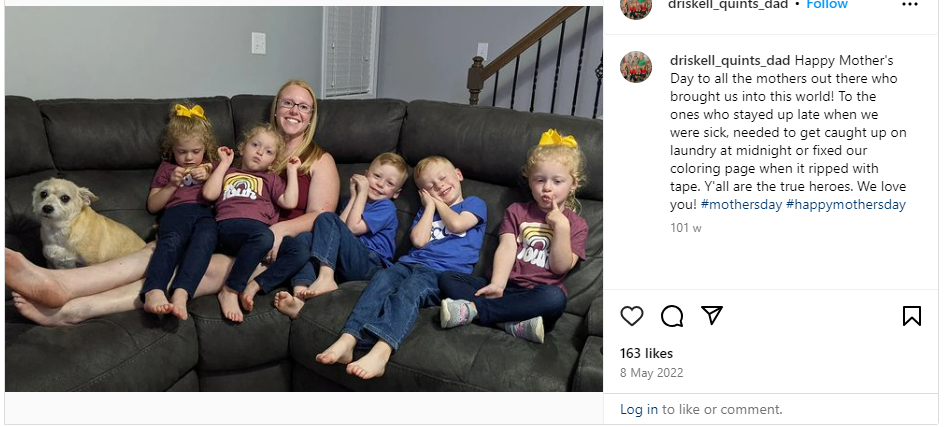Dad gets massively shamed for putting leashes on his 5-year-old quintuplets

Parenting in today’s world can be a challenging task, especially with the constant flow of unsolicited advice from family members, friends, and even strangers on the internet. One such instance involves Jordan Driskell, a young father of quintuplets, who has become the center of an online debate regarding his parenting methods.

At 31 years old, Jordan Driskell is raising five 5-year-old children, which, as you can imagine, can be quite overwhelming. When children of the same age are naturally curious and love to explore, managing them in public places becomes a real challenge. To solve this, Driskell made the decision to use child leashes for his kids, helping him keep track of them while they enjoy their outings.

Previously, Jordan used a 6-seat stroller to transport his quintuplets, but the stroller became inconvenient and uncomfortable for the children, who often complained when placed inside it. The leashes, in contrast, give the children the freedom to roam and explore while still allowing Jordan to maintain control and ensure their safety.
However, when Driskell posted a video of their family outing at an aquarium, the response was overwhelmingly negative. The video quickly went viral, racking up over 3 million views. Many people criticized the decision, stating that children shouldn’t be treated like animals and questioning Driskell’s ability to manage his family. Some even went as far as saying, “If you can’t manage the pressure, don’t have so many kids,” while others offered what they considered to be “helpful” advice, such as, “Can’t you just properly train your children?”

In contrast, Dr. Deborah Gilboa, an expert in parenting and adolescent development, defended Driskell’s decision. She argued that using a leash does not make a child feel like an animal. In fact, Dr. Gilboa stated that, for younger or neuro-diverse children, leashes can be a useful tool in public spaces. As an alternative to staying at home, the leash allows parents to take their children out without fear of losing control or compromising their safety.
Dr. Gilboa also noted that by the age of eight or nine, children should have developed the necessary listening skills to go without a leash. At this point, parents should rely more on verbal communication to guide their children rather than physical restraints.

Ultimately, Dr. Gilboa emphasizes that parents should have the freedom to choose the methods that work best for their families without facing unnecessary judgment from others.
So, what’s your take on the use of leashes for children in public? Do you think it’s a helpful parenting tool, or does it cross a line? Share your thoughts in the comments below and let others weigh in by sharing this article with friends and family.